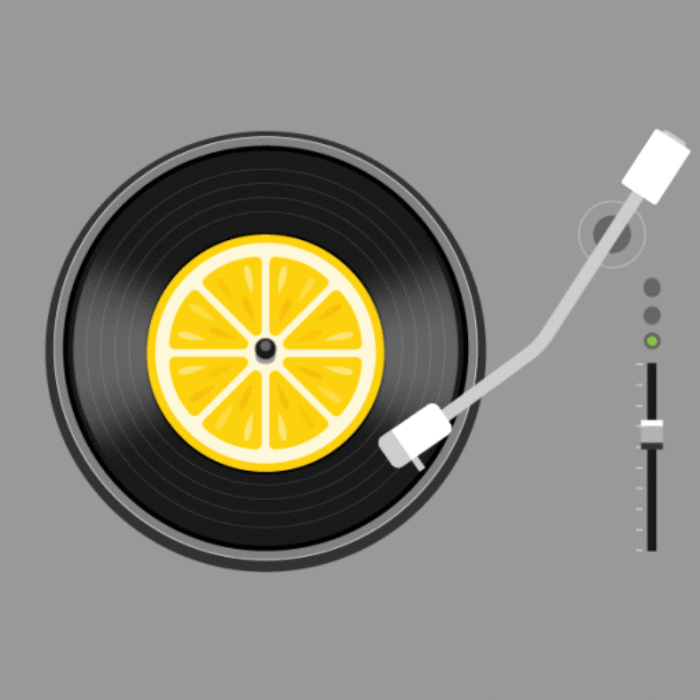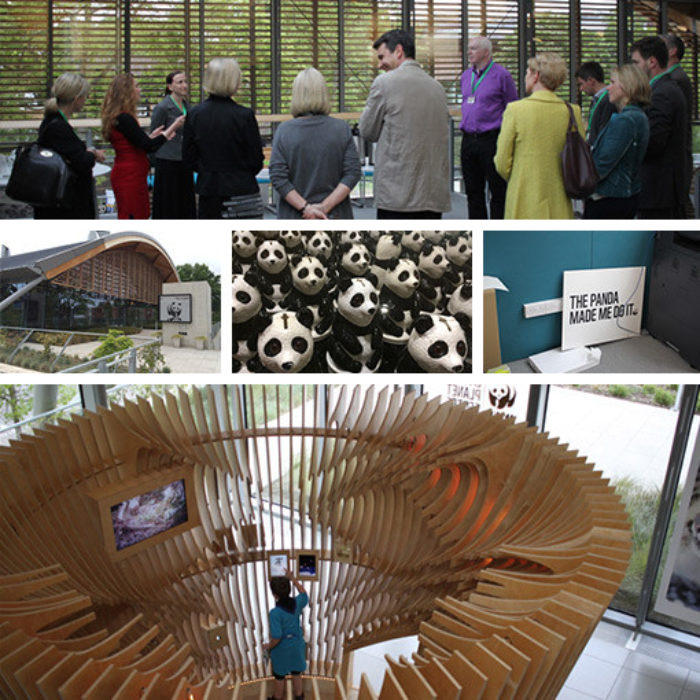The Call of Nature
World Water Day 2018
Answering the call of nature: a behavioural perspective
There’s nothing more natural than human behaviour, so this World Water Day we’re exploring the subconscious influences at play when we answer the most basic call of nature.
Not toilets, I hear you groan. Oh yes indeed.
Think of the toilet as your personal pipeline out into nature. Water is scarce, the planet is polluted, future energy and food supplies are at risk. Yet, in the UK, one third of the clean fresh water supplied to homes is flushed straight down the loo and research shows that most people don’t even consider this as using water. We mindlessly flush every time by default, habitually, automatically, repeatedly wasting huge amounts of nature’s most precious resource every day.
And we don’t like to talk about it.
But if we’re serious about water saving, we need to lift the lid on our flushing habits and break that toilet taboo.
We need to unpick the subtle behavioural biases that shape our decision to flush every time we’ve had a wee. For starters, we know that:
- Context counts – all behaviour takes place in the moment and is dependent on time and space. People often leave pee in the loo during the night when flushing may wake up other members of the household, so why not during the day? They may not flush every time at home when there is nobody to see, but most wouldn’t normally dream of not flushing at work where it feels socially unacceptable.
- Social norms shape our actions – Back in 315 AD, Rome had 144 public toilets and going to the loo was a social event where people chatted with friends, before wiping themselves with a sponge fixed to a wooden handle, spawning a cautionary tale not to “get hold of the wrong end of the stick”.
- We like the Status quo – In England, we’ve only been flushing for the last 150 years or so, yet nowadays, our default behaviour is to flush every time we use the loo, driven by a belief that this is the most hygienic socially acceptable way to keep our waste from view. But what if we encouraged people to make a group effort to change the status quo so that skipping the odd flush becomes the new normal?
We devised a behavioural experiment in the office to find out.
Finding our equilibrium
First, we measured how frequently we were flushing before we put any changes in place.
By placing sensors on the bathroom doors and toilets, we found that people flushed 67% of the time they entered, no doubt also using the bathroom for mirrors and tissues.
Disrupting our behavioural bias
Recognising that it might be easier to leave the toilet unflushed if the behaviour was somehow hidden, we changed the toilet water blue. And to encourage the binning rather than the flushing of tissues and paper, we switched out the closed pedal bins for larger open-topped baskets and put a couple of tissues in the bottom to start people off.
At the same time, Ann, one of our Directors, sent an email to ask people to flush less frequently.
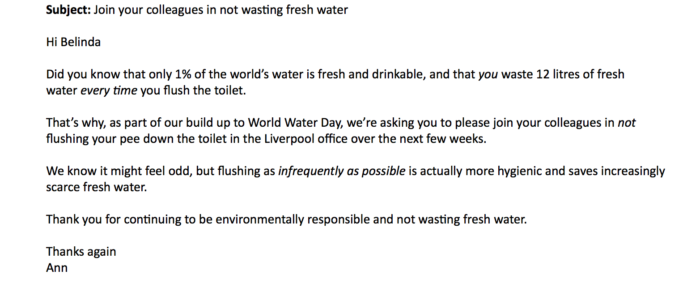
We crammed the email with a bunch of behavioural and linguistic framing techniques:
- Social comparisons – your colleagues are doing it, so should you.
- Personalisation – addressing the email to the individual and making use of the personal pronoun ‘you’ carries a stronger sense of responsibility.
- Because – opening with the contextualisation justifies the follow-up
- Anchoring – that 12 litres sounds larger when anchored against 1%.
- Hedonic editing – a large ‘every time’ stat is powerful.
- Self awareness – position them as already acting responsibly. Reluctance to disappoint is more powerful than keenness to please.
- Pre-empting hurdles- It pays to address potential issues and excuses up-front.
Despite the initial cries of “It’s just disgusting!” and “It’s our worst nightmare, isn’t it?!” our experiment packed a bigger punch than we expected.
Flushing decreased from 67% to just 22% in a single day, and stayed that way for a further two.
Restoring a New Equilibrium
In an attempt to maintain our momentum and cement our new reduced-flush equilibrium, we introduced our final nudges.
A follow-up email, celebrating progress, offered the team feedback on their success.
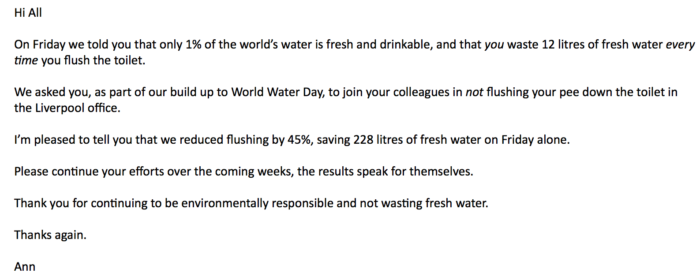
And a sign placed above the flush mechanism acted as a touchpoint reminder to disrupt subconscious habits. It reads simply “You save up to 12 litres of fresh water every time you don’t flush.”
Flushing decreased further to just 13% in one day.
Only time can tell if we’ve achieved a new normal, but at the very least we’ve successfully breached the toilet taboo and, in doing so, saved an estimated 936 litres of water over just 4 days.
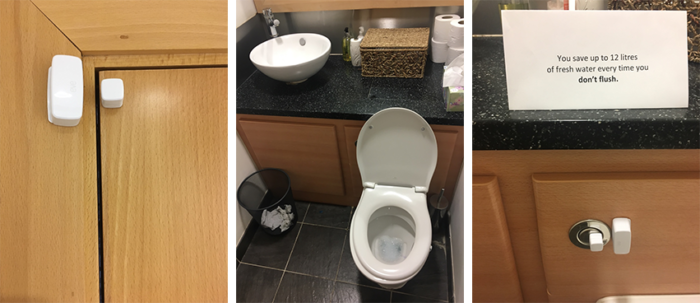
Feel free to use these nudges in your own workplace and do keep us posted. You can follow our progress on Twitter using the hashtag #FlushNudge

